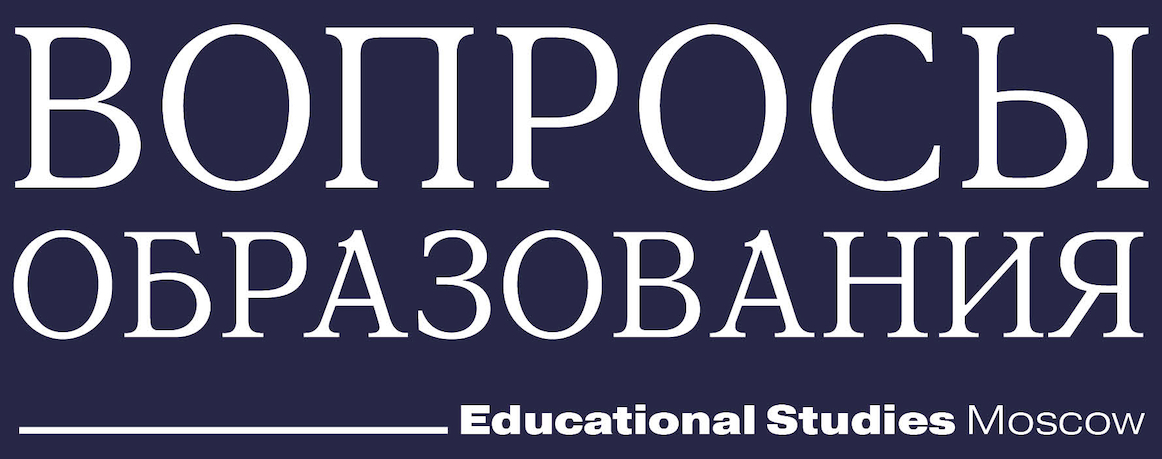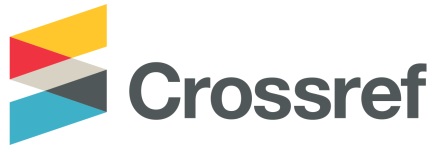Как измерить состояние потока в учебе. Апробация Шкалы потока в учебе на выборке российских студентов
Аннотация
Состояние потока (flow) испытывает человек, настолько сильно погруженный в какую-то деятельность, что не обращает внимания ни на что вокруг. Исследователи в разных странах мира показали, что опыт состояния потока положительно связан с самооценкой, удовлетворенностью жизнью, психологическим благополучием, а также, до некоторой степени, с образовательными результатами у студентов. На русском языке нет опросников, с помощью которых можно было бы достаточно быстро и надежно измерить состояние потока в учебе. В статье описан процесс локализации Шкалы потока в учебе на русском языке, а также приведены первичные результаты его валидизации. Апробация проведена на выборке около 600 студентов. В рамках сбора свидетельств конструктной валидности использован конфирматорный факторный анализ. Исследовано функционирование шкалы для разных групп участников опроса. Кроме того, применен подход современной теории тестирования для оценки надежности шкалы и качества отдельных вопросов шкалы, а также исследования функционирования отдельных категорий. Как и оригинальная версия, русскоязычная шкала достаточно надежна, а также инвариантна к условиям разнородных выборок испытуемых: по полу, по статусу работы/учебы, по способу получения выборки. Применение шкалы в российском контексте высветило проблему со структурой шкалы, которую ранее выявляли исследователи из некоторых стран при попытке адаптировать шкалу на языки своих стран. В целом русскоязычная версия Шкалы потока в учебе может быть успешно применена в российской исследовательской практике.
Скачивания
Литература
Abdellatif M.S. (2023) Training Program with Positive Psychology Techniques for Underachieving University Students’ Learned Helplessness and Psychological Flow. Information Sciences Letters, vol. 12, no 8, pp. 2697–2723. http://dx.doi.org/10.18576/isl/120822
Aleksandrova L.A. (2022) Flow Theory in Foreign and Russian Psychology: History, Contemporary State of Arts and Perspectives of Development. Sovremennaia zarubezhnaia psikhologiia / Journal of Modern Foreign Psychology, vol. 11, no 3, pp. 152–165 (In Russian). https://doi.org/10.17759/jmfp.2022110314
Andrich D. (1978) Application of a Psychometric Rating Model to Ordered Categories Which Are Scored with Successive Integers. Applied Psychological Measurement, vol. 2, no 4, pp. 581–594. https://doi.org/10.1177/014662167800200413
Bădoiu A., Oprea B. (2018) The Work-Related Flow (WOLF) Inventory: Romanian Adaptation. Psihologia Resurselor Umane, vol. 16, no 2, pp. 94–106.
Bakker A.B. (2008) The Work-Related Flow Inventory: Construction and Initial Validation of the WOLF. Journal of Vocational Behavior, vol. 72, no 3, pp. 400–414. http://dx.doi.org/10.1016/j.jvb.2007.11.007
Bakker A., Ljubin-Golub T., Rijavec M. (2017) Validation of the Study-Related Flow Inventory (WOLF-S). Croatian Journal of Education, vol. 19, no 1, pp. 147–173. http://dx.doi.org/10.15516/cje.v19i1.2194
Bassi M., Delle Fave A. (2012) Optimal Experience and Self-Determination at School: Joining Perspectives. Motivation and Emotion, vol. 36, December, pp. 425–438. https://doi.org/10.1007/s11031-011-9268-z
Brandtstädter J. (1998) Action Perspectives on Human Development. Handbook of Child Psychology (eds W. Damon, R.M. Lerner), Hoboken, NJ: John Wiley & Sons, pp. 807–863.
Brown T.A. (2015) Confirmatory Factor Analysis for Applied Research. New York, NY: Guilford.
Buil I., Catalán S., Martínez E. (2018) Exploring Students' Flow Experiences in Business Simulation Games. Journal of Computer Assisted Learning, vol. 34, no 2, pp. 183–192. http://dx.doi.org/10.1111/jcal.12237
Chen F.F. (2007) Sensitivity of Goodness of Fit Indexes to Lack of Measurement Invariance. Structural Equation Modeling: A Multidisciplinary Journal, vol. 14, no 3, pp. 464–504. http://dx.doi.org/10.1080/10705510701301834
Chen Y., Yu X., Huang B. (2016) The Chinese Version of Work-Related Flow Inventory (WOLF): An Examination of Reliability and Validity. Proceedings of the 2016 International Conference on Humanities and Social Science (Kuala Lumpur, Malaysia, 2016, 15–17 August), pp. 554–558. http://dx.doi.org/10.2991/hss-26.2016.94
Cheung G.W., Rensvold R.B. (2002) Evaluating Goodness-Of-Fit Indexes for Testing Measurement Invariance. Structural Equation Modeling, vol. 9, no 2, pp. 233–255. http://dx.doi.org/10.1207/S15328007SEM0902_5
Csikszentmihalyi M. (2000) Beyond Boredom and Anxiety. San Francisco, CA: Jossey-Bass.
Csikszentmihalyi M., Rathunde K. (1998) The Development of the Person: An Experiential Perspective on the Ontogenesis of Psychological Complexity. Handbook of Child Psychology (eds W. Damon, R.M. Lerner), Hoboken, NJ: John Wiley & Sons, pp. 635–685.
Davidov E., Meuleman B. (2019) Measurement Invariance Analysis Using Multiple Group Confirmatory Factor Analysis and Alignment Optimisation. Invariance Analyses in Large-Scale Studies. OECD Education Working Papers no 201. Paris: OECD, pp. 13–20. http://dx.doi.org/10.1787/254738dd-en
Deci E.L., Ryan R.M. (1985) The General Causality Orientations Scale: Self-Determination in Personality. Journal of Research in Personality, vol. 19, no 2, pp. 109–134. https://doi.org/10.1016/0092-6566%2885%2990023-6
Delle Fave A., Massimini F. (2003) Optimal Experience in Work and Leisure among Teachers and Physicians: Individual and Bio-Cultural Implications. Leisure Studies, vol. 22, no 4, pp. 323–342. https://doi.org/10.1080/02614360310001594122
Demerouti E., Bakker A.B., Sonnentag S., Fullagar C.J. (2012) Work‐Related Flow and Energy at Work and at Home: A Study on the Role of Daily Recovery. Journal of Organizational Behavior, vol. 33, no 2, pp. 276–295. http://dx.doi.org/10.1002/job.760
Demerouti E., Mäkikangas A. (2017) What Predicts Flow at Work. Flow at Work: Measurement and Implications (eds C. Fullagar, A. Delle Fave), London: Routledge, pp. 66–80. https://doi.org/10.4324/9781315871585
Engeser S., Rheinberg F., Vollmeyer R., Bischoff J. (2005) Motivation, Flow-Erleben und Lernleistung in Universitären Lernsettings. Zeitschrift für Pädagogische Psychologie, vol. 19, no 3, ss. 159–172. https://doi.org/10.1024/1010-0652.19.3.159
Freitas de C.P.P., Damásio B.F., Haddad E.J., Koller S.H. (2019) Work-Related Flow Inventory: Evidence of Validity of the Brazilian Version. Paidéia (Ribeirão Preto), vol. 29, no 1. http://dx.doi.org/10.1590/1982-4327e2901
Fritz B.S., Avsec A. (2007) The Experience of Flow and Subjective Well-Being of Music Students. Horizons of Psychology, vol. 16, no 2, pp. 5–17.
Fullagar C.J., Knight P.A., Sovern H.S. (2013) Challenge/Skill Balance, Flow, and Performance Anxiety. Applied Psychology, vol. 62, no 2, pp. 236–259. http://dx.doi.org/10.1111/j.1464-0597.2012.00494.x
Geyser I., Geldenhuys M., Crous F. (2015) The Dimensionality of the Work Related Flow Inventory (WOLF): A South African Study. Journal of Psychology in Africa, vol. 25, no 4, pp. 282–287. http://dx.doi.org/10.1080/14330237.2015.1078084
Gu H., Wen Z., Fan X. (2020) Investigating the Multidimensionality of the Work-Related Flow Inventory (WOLF): A Bifactor Exploratory Structural Equation Modeling Framework. Frontiers in Psychology, vol. 11, May, Article no 740. http://dx.doi.org/10.3389/fpsyg.2020.00740
Hamari J., Koivisto J. (2014) Measuring Flow in Gamification: Dispositional Flow Scale-2. Computers in Human Behavior, vol. 40, November, pp. 133–143. http://dx.doi.org/10.1016/j.chb.2014.07.048
Happell B., Gaskin C.J., Platania-Phung C. (2015) The Construct Validity of the Work-Related Flow Inventory in a Sample of Australian Workers. The Journal of Psychology, vol. 149, no 1, pp. 42–62. http://dx.doi.org/10.1080/00223980.2013.838539
Hosseni M.S., Mousavi V.M., Naji M. (2018) Development and Determining the Reliability and Validity of the Work-Related Flow State Questionnaire (WFSQ) among Military Personnel. Journal of Military Medicine, vol. 20, no 4, pp. 354–363.
Hu L., Bentler P.M. (1999) Cutoff Criteria for Fit Indexes in Covariance Structure Analysis: Conventional Criteria Versus New Alternatives. Structural Equation Modeling: A Multidisciplinary Journal, vol. 6, no 1, pp. 1–55. https://doi.org/10.1080/10705519909540118
Ilies R., Wagner D., Wilson K., Ceja L., Johnson M., DeRue S., Ilgen D. (2017) Flow at Work and Basic Psychological Needs: Effects on Well‐Being. Applied Psychology, vol. 66, no 1, pp. 3–24. http://dx.doi.org/10.1111/apps.12075
International Test Commission (2017) ITC Guidelines for Translating and Adapting Tests. International Journal of Testing, vol. 18, no 2, pp. 101–134. https://doi.org/10.1080/15305058.2017.1398166
Jackson S.A., Eklund R.C. (2002) Assessing Flow in Physical Activity: The Flow State Scale–2 and Dispositional Flow Scale–2. Journal of Sport and Exercise Psychology, vol. 24, no 2, pp. 133–150. http://dx.doi.org/10.1123/jsep.24.2.133
Jackson S.A., Marsh H.W. (1996) Development and Validation of a Scale to Measure Optimal Experience: The Flow State Scale. Journal of Sport and Exercise Psychology, vol. 18, no 1, pp. 17–35. http://dx.doi.org/10.1123/jsep.18.1.17
Jackson S.A., Thomas P.R., Marsh H.W., Smethurst C.J. (2001) Relationships between Flow, Self-Concept, Psychological Skills, and Performance. Journal of Applied Sport Psychology, vol. 13, no 2, pp. 129–153. http://dx.doi.org/10.1080/104132001753149865
Joo Y.J., Oh E., Kim S.M. (2015) Motivation, Instructional Design, Flow, and Academic Achievement at a Korean Online University: A Structural Equation Modeling Study. Journal of Computing in Higher Education, vol. 27, no 1, pp. 28–46. http://dx.doi.org/10.1007/s12528-015-9090-9
Leontiev D.A., Osin E.N., Dosumova S.S., Rzaeva F.R., Bobrov V.V. (2018) Study-Related Experiences and Their Association with Psychological Well-Being. Psikhologicheskaya nauka i obrazovanie / Psychological Science and Education, vol. 23, no 6, pp. 55–66 (In Russian). https://doi.org/10.17759/ pse.2018230605
Llorens S., Salanova M., Rodríguez A.M. (2013) How Is Flow Experienced and by Whom? Testing Flow among Occupations. Stress and Health, vol. 29, no 2, pp. 125–137. http://dx.doi.org/10.1002/smi.2436
Ljubin-Golub T., Rijavec M., Jurčec L. (2018) Flow in the Academic Domain: The Role of Perfectionism and Engagement. The Asia-Pacific Education Researcher, vol. 27, no 5, pp. 99–107. http://dx.doi.org/10.1007/s40299-018-0369-2
Magnusson D., Stattin H. (1998) Person-Context Interaction Theories. Handbook of Child Psychology (eds W. Damon, R.M. Lerner), Hoboken, NJ: John Wiley & Sons, pp. 685–760.
McAdams D.P. (1990) Unity and Purpose in Human Lives: The Emergence of Identity as a Life Story. Studying Persons and Lives (eds A.I. Rabin, R.A. Zucker, R.A. Emmons, S. Frank), New York, NY: Springer, pp. 148–200.
Mustafa S.M.S., Elias H., Noah S.M., Roslan S. (2010) A Proposed Model of Motivational Influences on Academic Achievement with Flow as the Mediator. Procedia—Social and Behavioral Sciences, vol. 7, no 1, pp. 2–9. http://dx.doi.org/10.1016/j.sbspro.2010.10.001
Nakamura J., Csikszentmihalyi M. (2014) The Concept of Flow. Flow and the Foundations of Positive Psychology. The Collected Works of Mihaly Csikszentmihalyi. Cham: Springer, pp. 239–263.
Nakamura J., Csikszentmihalyi M. (2009) Flow Theory and Research. Handbook of Positive Psychology (eds C.R. Snyder, S.J. Lopez), New York, NY: Oxford University, pp. 195–206.
Norsworthy C., Jackson B., Dimmock J.A. (2021) Advancing Our Understanding of Psychological Flow: A Scoping Review of Conceptualizations, Measurements, and Applications. Psychological Bulletin, vol. 147, no 8, pp. 806–827. http://dx.doi.org/10.1037/bul0000337
Osin E.N., Leontiev D.A. (2017) Assessment of Subjective Experiences at Work: Validation of an Instrument. Organizational Psychology, vol. 7, no 2, pp. 30–51 (In Russian).
Putnick D.L., Bornstein M.H. (2016) Measurement Invariance Conventions and Reporting: The State of the Art and Future Directions for Psychological Research. Developmental Review, vol. 41, September, pp. 71–90. http://dx.doi.org/10.1016/j.dr.2016.06.004
Rheinberg F. (2020) Intrinsic Motivation and Flow. Motivation Science, vol. 6, no 3, pp. 199–200. https://psycnet.apa.org/doi/10.1037/mot0000165
Riva E.F., Riva G., Talo C., Boffi M., Rainisio N., Pola L., Diana B., Villani D., Argenton L., Inghilleri P. (2017) Measuring Dispositional Flow: Validity and Reliability of the Dispositional Flow State Scale 2, Italian Version. PLOS One, vol. 12, no 9, pp. 1–15. https://doi.org/10.1371/journal.pone.0182201
Rosseel Y. (2012) lavaan: An R Package for Structural Equation Modeling. Journal of Statistical Software, vol. 48, no 2, pp. 1–36. http://dx.doi.org/10.18637/jss.v048.i02
Rossin D., Ro Y.K., Klein B.D., Guo Y.M (2009) The Effects of Flow on Learning Outcomes in an Online Information Management Course. Journal of Information Systems Education, vol. 20, no 1, pp. 87–98.
Shernoff D.J., Csikszentmihalyi M. (2009) Cultivating Engaged Learners and Optimal Learning Environments. Handbook of Positive Psychology in Schools (eds R. Gilman, E.S. Huebner, M.J. Furlong), New York, NY: Taylor & Francis, pp. 131–145. https://doi.org/10.4324/9780203884089
Shernoff D.J., Hoogstra L. (2001) Continuing Motivation beyond the High School Classroom. New Directions for Child and Adolescent Development, vol. 2001 (93), October, pp. 73–88. http://dx.doi.org/10.1002/cd.26
Smith Jr E.V., Wakely M.B., De Kruif R.E., Swartz C.W. (2003) Optimizing Rating Scales for Self-Efficacy (and Other) Research. Educational and Psychological Measurement, vol. 63, no 3, pp. 369–391. http://dx.doi.org/10.1177/0013164403063003002
Ullén F., Örjan de Manzano, Almeida R., Magnusson P.K.E., Pedersen N.L. et al. (2012) Proneness for Psychological Flow in Everyday Life: Associations with Personality and Intelligence. Personality and Individual Differences, vol. 52, no 2, pp. 167–172. http://dx.doi.org/10.1016/j.paid.2011.10.003
Wright B.D., Linacre J.M. (1994) Reasonable Mean-Square Fit Values. Rasch Measurement Transactions, vol. 8, no 3, pp. 370–371.
Yamashita T. (2022) Analyzing Likert Scale Surveys with Rasch Models. Research Methods in Applied Linguistics, vol. 1, no 3, Article no 100022. http://dx.doi.org/10.1016/j.rmal.2022.100022
Zito M., Bakker A.B., Colombo L., Cortese C.G. (2015) A Two-Steps Study for the Italian Adaptation of the Work-Related Flow (WOLF) inventory: The I-WOLF. Testing, Psychometrics, Methodology in Applied Psychology, vol. 22, no 4, pp. 553–570. http://dx.doi.org/10.4473/TPM22.4.8








